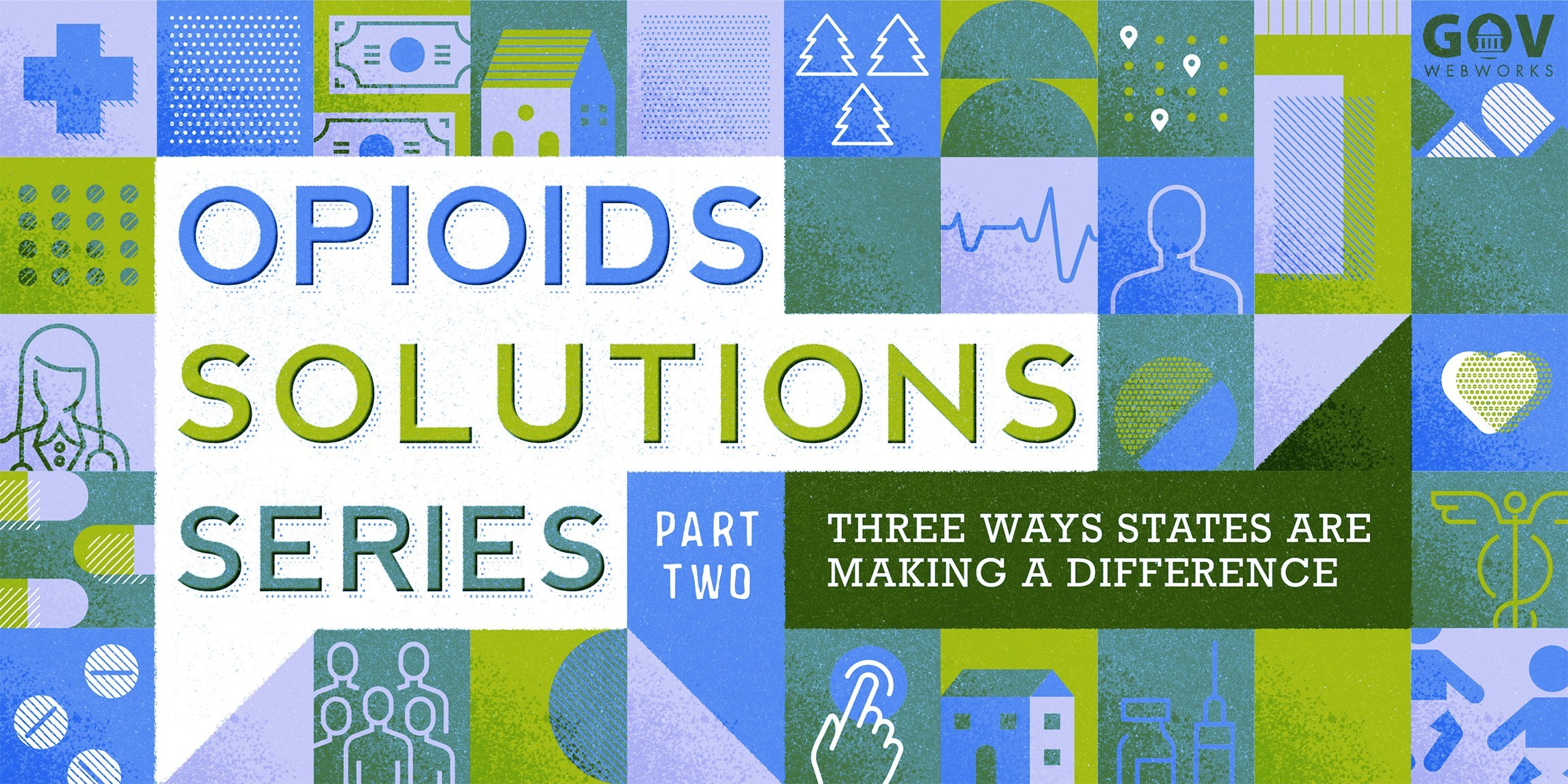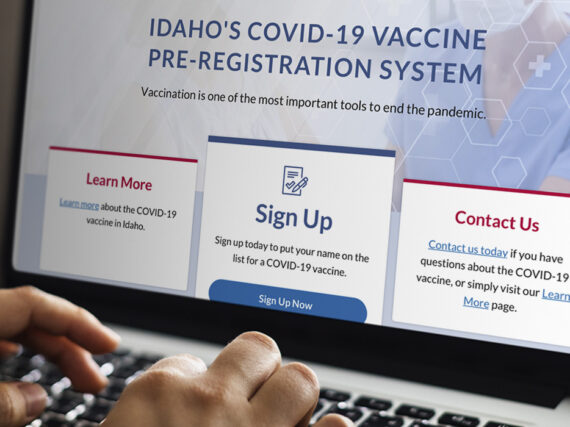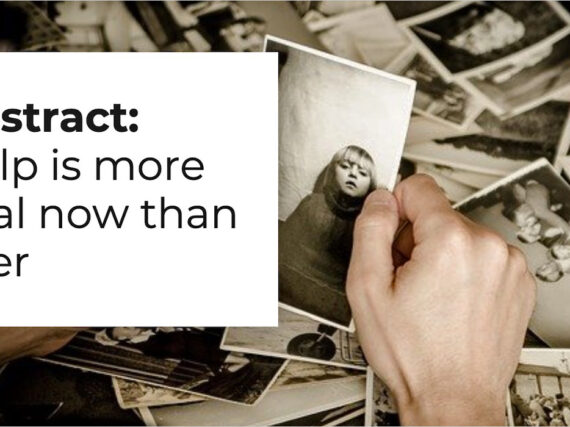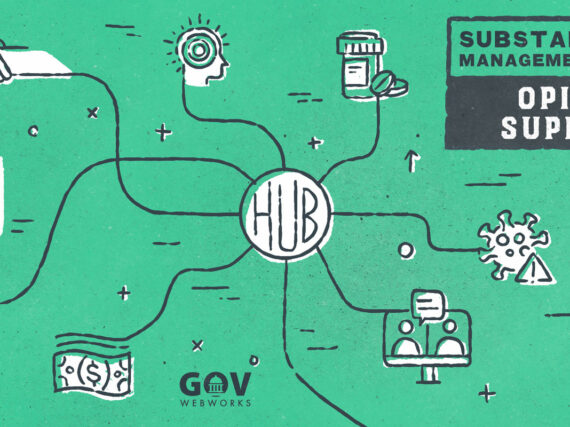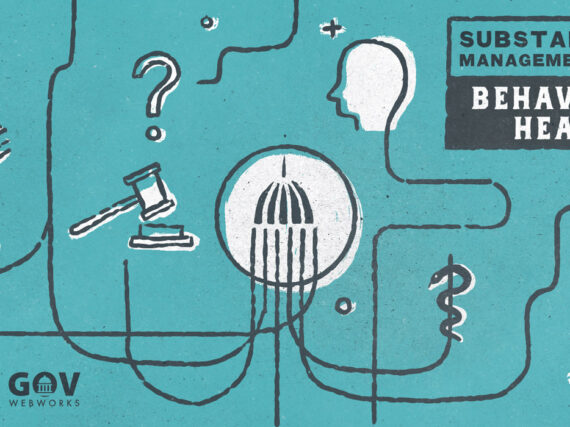In her work as a peer support specialist for Project Lazarus, Brooke Stanley has helped hundreds of people with addiction issues. This is especially notable because, a recovering addict herself, Brooke’s story could have ended quite differently.
Discussed in Opioids Crisis Solutions Series Part 1, the opioid epidemic claims the lives of approximately six Americans every hour, almost six times the toll of either HIV/Aids or cancer. (1) Yet, as of July 2018, the Federal government was providing only one sixth the funding for this health crisis. (2) Consequently, states must find innovative solutions to address and fund this national issue.
Most of these solutions aim to connect people with community and medical treatments via personnel or technology. Some of the most successful programs we’re seeing across the country include one or more of the following components:
- Medication Assisted Treatment (MAT) – Combines behavioral therapy and medication to treat clients.
- A “Hub and Spoke” (H&S) approach – A central “doorway” such as a website or resource portal to connect customers with community resources.
- Addiction and Recovery Treatment Services (ARTS) – Medicaid funded to connect clients with treatment within the wider healthcare system.
Medication Assisted Treatment
Brooke Stanley’s own story began quite innocuously. Following gallbladder surgery she was prescribed Vicodin, and quickly become addicted to opioids like Percocet and Oxycodone. Drugs often provide teens a form of escape from anxiety, OCD, and self-esteem issues, as they did for Brooke, making her feel beautiful and more confident. It was easy for her to obtain drugs from people on the street and to hide this addiction from her loving and supportive family. After ending up in rehab and other institutions, she was able to get clean with the help of Medication Assisted Treatment (MAT), and now helps others to do the same.
Medication Assisted Treatment is a combination approach that uses behavioral treatment with appropriate medications. These services have proven to be highly effective, as they were for Brooke. Consequently, funding for these projects is maintained in the President’s Budget. Many states get federal grants from CMS orSAMHSA. For states with high rates of treatment, services can be expanded using grants like the Prescription Drug and Opioid Addiction program.
Despite these options, MAT remains an underutilized solution, with only 22 states currently funded by this program. Part of the problem is the stigma and misunderstanding associated with medication such as methadone which acts as a blocker, numbing physical receptors. As Brooke told me, “this drug addressed the physical aspects of my addiction so I could address the emotional aspects of my addiction. It allowed me to deal with the underlying issues, to focus on counseling and recovery, and become whole again.” However, giving drugs to addicts can seem counter-intuitive, and so not all states have adopted this approach.
Pennsylvania is a great example of an innovative state that uses Medicaid to expand their MAT services and help treat those with addiction issues. Through a collaboration of 13 different agencies, customers are connected to one of 45 statewide Opioid Centers of Excellence. Whether customers have mental health, addiction, or pain issues, the focus is on treating the whole person. The goal is to connect people via ‘soft’ agency referrals and focus on solutions that provide multiple options for success. Essentially a continuum of care model has emerged that involves peer-support groups, wrap around services, cross agency solutions, and public/private partnerships. As Pittsburgh’s Critical Communities Initiative Manager, Laura Drogowski, told Governing, “it’s giving people many doors to choose from, with many options behind those doors.”
Hub and Spoke
After MAT helped Brooke with her recovery, she went on to work with the Hub and Spoke (H&S) model at the North Carolina based non-Profit, Project Lazarus. As Brooke told me, a peer support model would have helped her navigate the system during her own struggle. Most of her clients at Project Lazarus are from broken homes and need the support offered by this approach.
In this model, community resources are better coordinated, which makes it a strong basis for many state grants. A central “hub” connects the disparate public health “spokes” to provide a more holistic approach to addiction services. The hub, such a website or treatment center, aims to increase public awareness of opioid related issues through education and outreach. Other goals include reducing the misuse, over prescription, and abundance of opioids in the community. The surrounding community-based spokes provide the appropriate responses, which may include screening and treatment for mental illness, addiction, and related issues. Data is used to evaluate and improve on treatment responses and to refine the system of care.
Led by the medical community, Vermont has developed a strong H&S approach. Healthcare, public safety, and the state are connected in one integrated system. In this case, the hub concentrates on assessment, care coordination, and consultation. The spokes provide a range of residential or inpatient treatment and services. As a rural state, there is flexibility between hubs and spokes. Clients may receive intensive treatment at an central hub, and then receive follow up care at one of the regional spokes.
Neighboring New Hampshire also implemented a H&S model to connect their community resources. Using a State Opioid Response grant from SAMHSA they established a customer facing resource portal called The Doorway NH. The web portal provides a unified site for the many resources available throughout the state. This resource has made it much easier to access screening, evaluation, treatment, and long-term recovery supports. Additionally, other services related to job training, education resources, assistance with food, childcare, and transportation are also available. There are currently nine Doorway locations throughout the state. These centers provide help within an hour for anyone in the state that needs it. The state has also secured additional funds for the expansion of MAT, peer recovery support services, and evidence-based prevention programs.
The state of Wisconsin uses their own version of a H&S model of care to connect users with MAT services. However, due to a shortage of personnel, many people in Wisconsin have been unable to access treatment services. According to The Hill, recent legislation aims to address this issue by allowing certified counselors from other states to practice there. Wisconsin is also using legislation such as HOPE, (Heroin, Opioid Prevention and Education) in their fight. This is expanding the number of providers and centers where people can obtain services. Engagement begins in the healthcare system for behavioral therapies and appropriate medications. Recovery services are then maintained via community-based providers, including primary care physicians.
Addiction and Recovery Treatment Services
In many states, MAT and H&S approaches are not being used. The White House Opioid Commission recently found that 85% of counties have no specialty opioid treatment programs. Or, if treatment is available, it is often expensive and users face additional hurdles to access it, such as a lack of insurance. In trying to meet constituent needs, states have looked for other solutions. As an alternative to SAMHSA, the state of Virginia is using Medicaid to fund what is called an Addiction and Recovery Treatment Services (ARTS) program. Medicaid funding makes addiction treatment easier to access in the wider healthcare system.
Case managers and care coordinators help patients with housing, employment, and other health care needs. Related problems such as mental health and infectious diseases can be addressed at the same time. The ARTS program encourages treatment providers to accept insurance and demonstrates to them that it can still be financially sustainable to provide these services. This increases the number of options available for consumers. As Jim May of the Richmond Behavioral Health Authority told Vox, “I like to think of grants as a way to test out a new service line and see if we like it… But we’re going to sustain it with Medicaid.”
Combined approaches
Some states use multiple approaches to manage the crisis. For instance, Minnesota received a two-year State Targeted Response to the Opioid Crisis grant from SAMHSA in 2017. This enabled them to launch a range of community-based solutions across the state. They streamlined their services, and provided more support for existing programs by expanding the number of MAT providers and their geographic reach. SAMHSA funding also provided for innovative approaches to make it easier and faster for people to receive treatment services. Peer recovery, care coordination services, and access to Naloxone were also increased. At the same time, the Minnesota State Government Opioid Oversight Project (SOOP)enhanced the coordination between state agencies, counties, and others. By reducing duplication of efforts and resources, services were provided more efficiently. The state also launched Fast-Tracker, a website which shows when shelter beds are available in real-time. These combined efforts have enabled the state to tackle the crisis in a more coordinated way.
The Hawaii Opioid Initiative Action Plan connects the healthcare system and public safety with community members to modernize the way treatments are accessed. The state hopes to improve data collection, prescriber practices, and to coordinate resource efforts. They also began a campaign to de-stigmatize opioid use and encourage people to seek treatment. As Leilani Maxera of the Hawaii Health and Harm Reduction Center noted in Hawaii Business Magazine, “If people are embarrassed to tell others they use, they are more likely to overdose because they are hiding it… The stigma makes people ashamed to get help.”
At the same time, a shift occurred in law enforcement. To help remove unused opioids from the community, prescription drop-boxes were established at police stations. Instead of arresting people for minor offenses, officers become an alternative resource to connect people with help. In addition, the Alcohol and Drug Abuse Division has launched a website so people can get information in a central place. By encouraging clear lines of communication, and a more supportive environment, the hope is that people in the community will know they can go to police for help.
In summary
While these examples are encouraging, Brooke reminded me that “the battle is being won, but the war is not over.” After 10 years in recovery, attending weekly narcotics anonymous meetings, being active in her faith community, and helping others in need, she says, “there is still work to be done.”
These three popular components – MAT, H&S, and Medicaid funded ARTS – all use a combination of federal and state funding and grants to develop the technology tools that tackle the crisis from a variety of angles. Some tools aim to restrict access to opioids with prescription monitoring tools, others crunch data for better decision making. Resource portals and mobile apps connect people with community resources, education, and medical treatments. These tools ensure that both effective communication and collaboration of resources are maintained. This is evident in all three elements:
- MAT models are most successful when coupled with a dashboard or some internal system, such as Pennsylvania and Wisconsin who expanded Medicaid and could include opioid and alternative treatments in their healthcare system. Medicaid funding with matching state dollars provides for a longer term sustainable commitment.
- The H&S resource portals used by Vermont and New Hampshire work well for states with good central structures and high levels of regional collaboration. SAMHSA grants can provide a temporary boost to start a project.
- In the ARTS model, mobile apps and customer portals work well in states like Virginia, because they have a well connected health care system and social service case managers ready to help.
Whichever approach is the best fit, community education is crucial for project buy-in. By better connecting users with available resources we hope this epidemic will subside.
In Part 3 of this series I will examine some of the funding streams available for opioid treatment. This will include Medicaid and SAMSHA grants, the grant process, and what states can do to secure funding.
NOTE: If you or someone you know are experiencing an addiction related crisis, call 2-1-1 or search the Opioid Treatment Program Directory for help in your state.
Learn more
- Download the Managing Opioid Issues white paper
- Contact us to learn more about creating a substance abuse assistance portal
- Opioids Crisis Solutions Series Part 1: How opioids took America by surprise, and what states can do about it, by Ravi Jackson
- Opioids Crisis Solutions Series Part 3: How states find funding to stem the crisis, by Ravi Jackson
Endnotes
- CDC: Drug overdose deaths continue to increase in the United States
- McKinsey & Company: Why we need bolder action to combat the opioid epidemic
Resources
- Project Lazarus Model is based on the twin premises that overdose deaths are preventable and that all communities are responsible for their own health
- MAT Community Guide, Bedrock Recovery Center
